1. Laine MT, Laukontaus SJ, Kantonen I, Venermo M. Population-based study of ruptured abdominal aortic aneurysm. Br J Surg. 2016; 103:1634–1639. PMID:
27508946.
2. Lederle FA, Freischlag JA, Kyriakides TC, Padberg FT Jr, Matsumura JS, Kohler TR, et al. Outcomes following endovascular vs open repair of abdominal aortic aneurysm: a randomized trial. JAMA. 2009; 302:1535–1542. PMID:
19826022.
3. EVAR trial participants. Endovascular aneurysm repair versus open repair in patients with abdominal aortic aneurysm (EVAR trial 1): randomised controlled trial. Lancet. 2005; 365:2179–2186. PMID:
15978925.
4. Patel R, Sweeting MJ, Powell JT, Greenhalgh RM. EVAR trial investigators. Endovascular versus open repair of abdominal aortic aneurysm in 15-years' fol low-up of the UK endovascular aneurysm repair trial 1 (EVAR trial 1): a randomised controlled trial. Lancet. 2016; 388:2366–2374. PMID:
27743617.
5. George EL, Arya S, Ho VT, Stern JR, Sgroi MD, Chandra V, et al. Trends in annual open abdominal aor t ic surgical volumes for vascular trainees compared with annual national volumes in the endovascular era. J Vasc Surg. 2022; 76:1079–1086. PMID:
35598821.
6. Schermerhorn ML, Buck DB, O'Malley AJ, Curran T, McCallum JC, Darling J, et al. Long-term outcomes of abdominal aortic aneurysm in the medicare population. N Engl J Med. 2015; 373:328–338. PMID:
26200979.
7. Prinssen M, Verhoeven EL, Buth J, Cuypers PW, van Sambeek MR, Balm R, et al. A randomized trial comparing conventional and endovascular repair of abdominal aortic aneurysms. N Engl J Med. 2004; 351:1607–1618. PMID:
15483279.
8. van Schaik TG, Yeung KK, Verhagen HJ, de Bruin JL, van Sambeek MR, Balm R, et al. Long-term survival and secondary procedures after open or endovascular repair of abdominal aortic aneurysms. J Vasc Surg. 2017; 66:1379–1389. PMID:
29061270.
9. Becquemin JP, Pillet JC, Lescalie F, Sapoval M, Goueffic Y, Lermusiaux P, et al. A randomized controlled trial of endovascular aneurysm repair versus open surgery for abdominal aortic aneurysms in low- to moderate-risk patients. J Vasc Surg. 2011; 53:1167–1173. PMID:
21276681.
10. De Bruin JL, Baas AF, Buth J, Prinssen M, Verhoeven EL, Cuypers PW, et al. Long-term outcome of open or endovascular repair of abdominal aortic aneurysm. N Engl J Med. 2010; 362:1881–1889. PMID:
20484396.
11. Greenhalgh RM, Brown LC, Powell JT, Thompson SG, Epstein D. United Kingdom EVAR Trial Investigators. Endovascular repair of aortic aneurysm in patients physically ineligible for open repair. N Engl J Med. 2010; 362:1872–1880. PMID:
20382982.
12. Lederle FA, Freischlag JA, Kyriakides TC, Matsumura JS, Padberg FT Jr, Kohler TR, et al. Long-term comparison of endovascular and open repair of abdominal aortic aneurysm. N Engl J Med. 2012; 367:1988–1997. PMID:
23171095.
13. United Kingdom EVAR Trial Investigators. Greenhalgh RM, Brown LC, Powell JT, Thompson SG, Epstein D, et al. Endovascular versus open repair of abdominal aortic aneurysm. N Engl J Med. 2010; 362:1863–1871. PMID:
20382983.
14. Trooboff SW, Wanken ZJ, Gladders B, Columbo JA, Lurie JD, Goodney PP. longitudinal spending on endovascular and open abdominal aortic aneurysm repair. Circ Cardiovasc Qual Outcomes. 2020; 13:e006249. PMID:
32375504.
15. Columbo JA, Goodney PP, Gladders BH, Tsougranis G, Wanken ZJ, Trooboff SW, et al. Medicare costs for endovascular abdominal aortic aneurysm treatment in the Vascular Quality Initiative. J Vasc Surg. 2021; 73:1056–1061. PMID:
32682064.
16. Byun E, Kwon TW, Kim H, Cho YP, Han Y, Ko GY, et al. Quality-adjusted life year comparison at medium term follow-up of endovascular versus open surgical repair for abdominal aortic aneurysm in young patients. PLoS One. 2021; 16:e0260690. PMID:
34855851.
17. Lederle FA, Stroupe KT, Kyriakides TC, Ge L, Freischlag JA. Open vs Endovascular Repair (OVER) Veterans Affairs Cooperative Study Group. Long-term cost-effectiveness in the veterans affairs open vs endovascular repair study of aortic abdominal aneurysm: a randomized clinical trial. JAMA Surg. 2016; 151:1139–1144. PMID:
27627802.
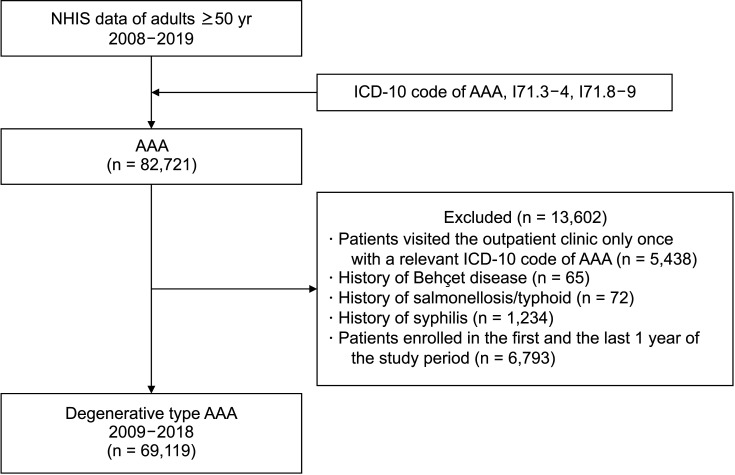
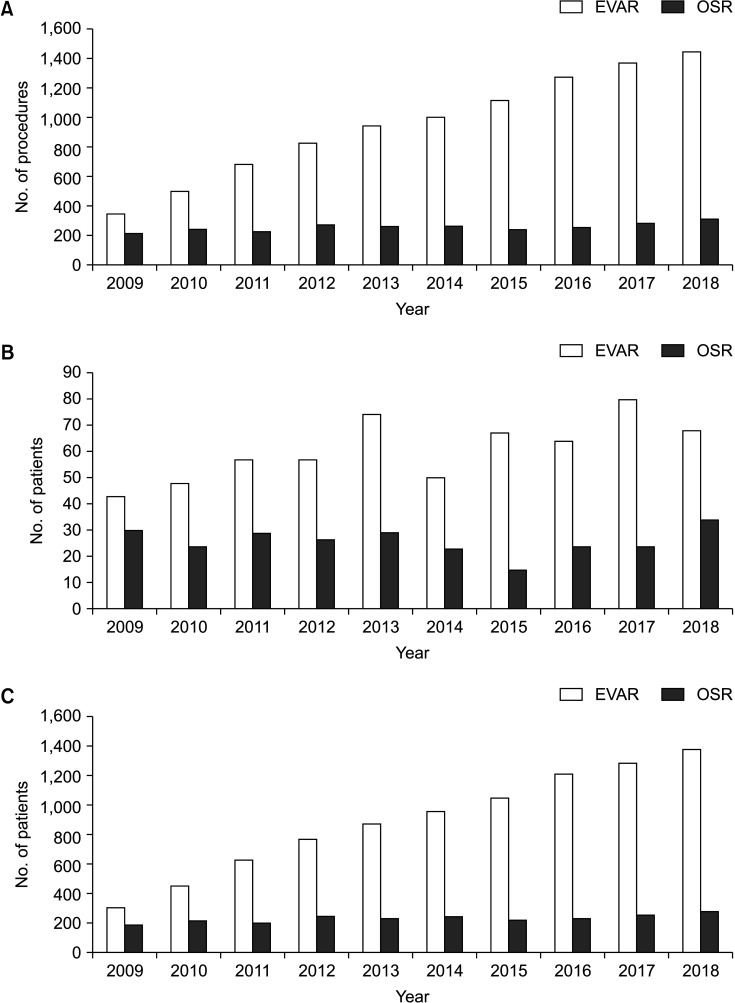
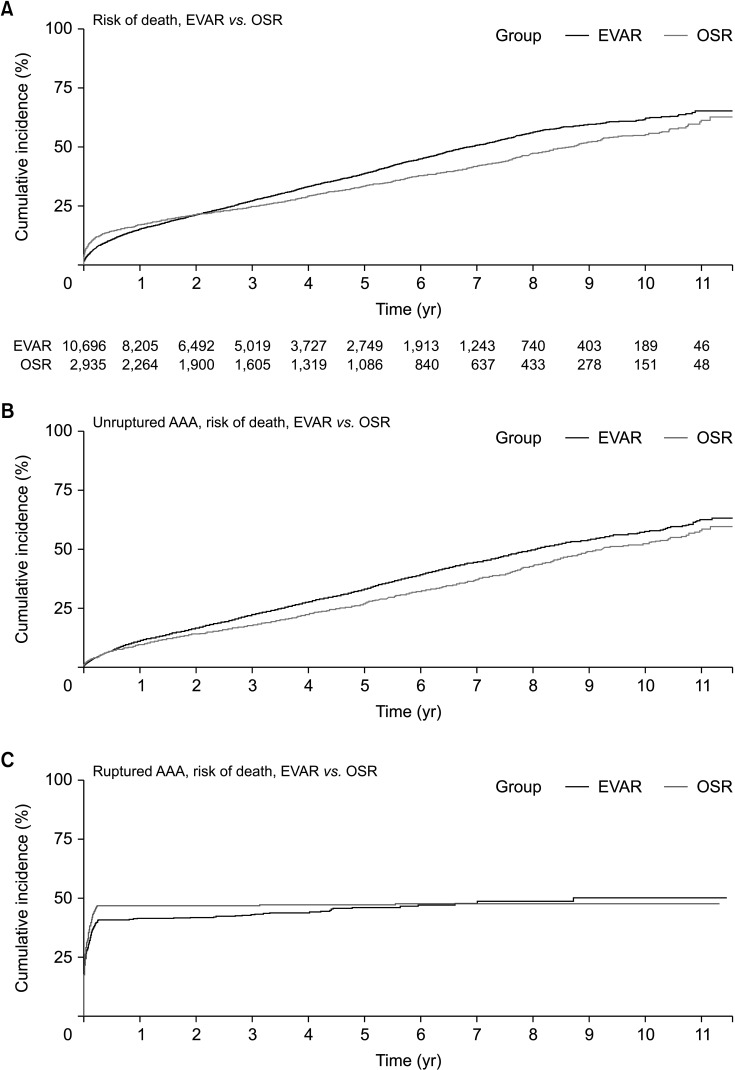






 PDF
PDF Citation
Citation Print
Print



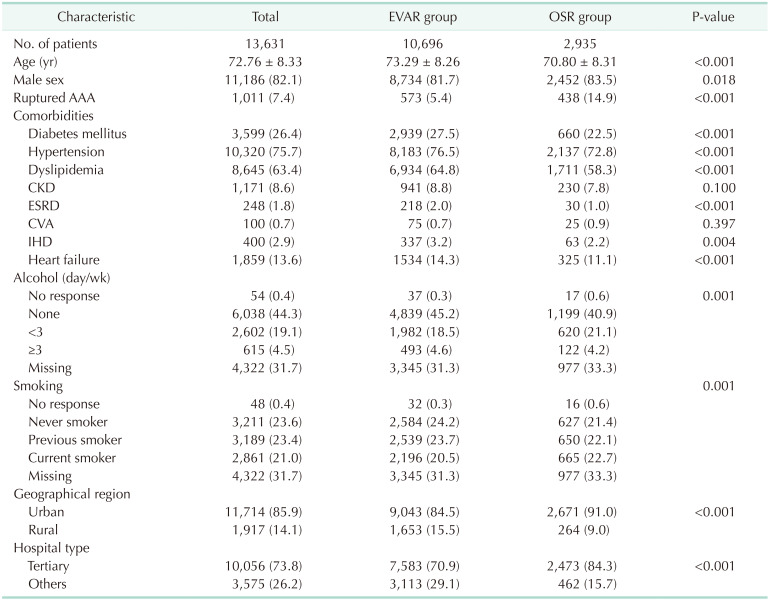
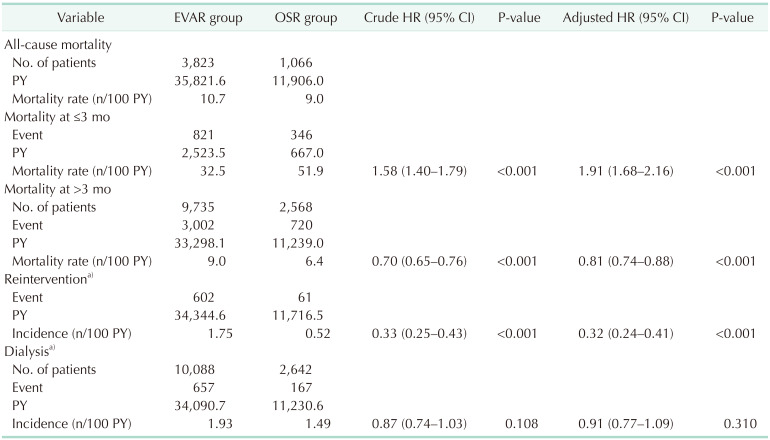
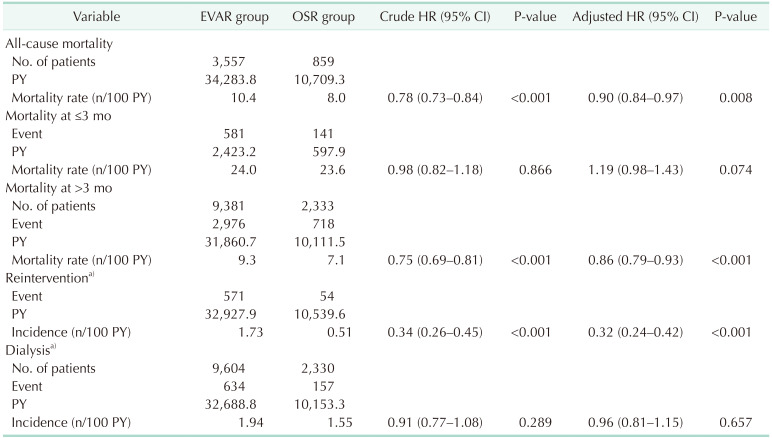
 XML Download
XML Download